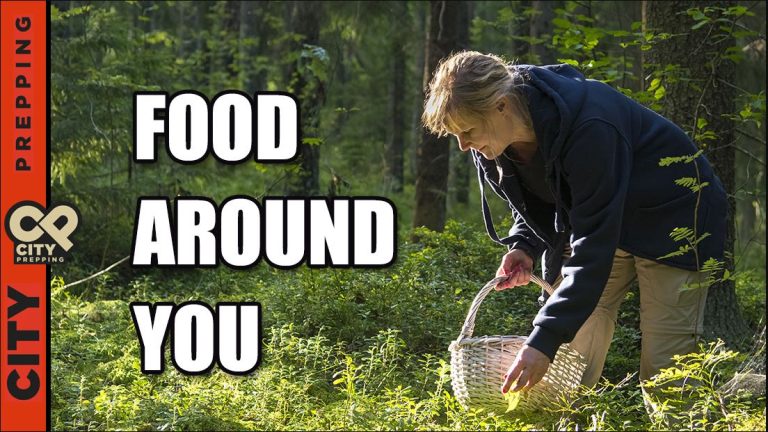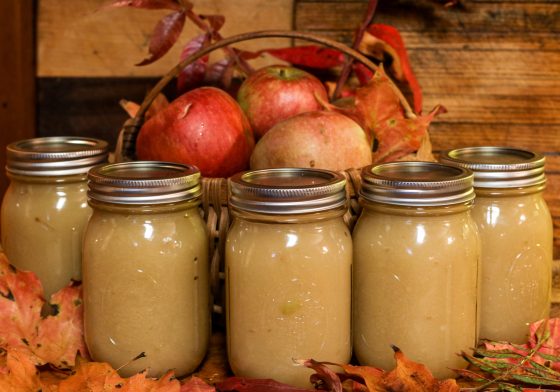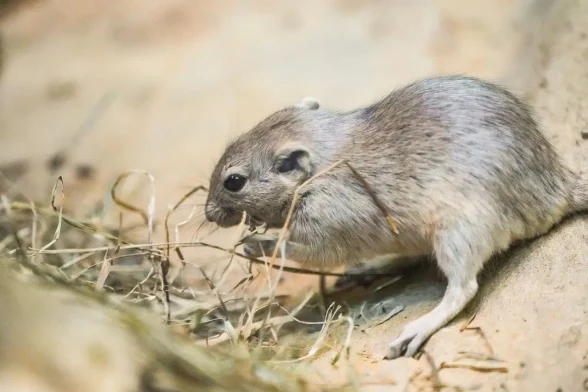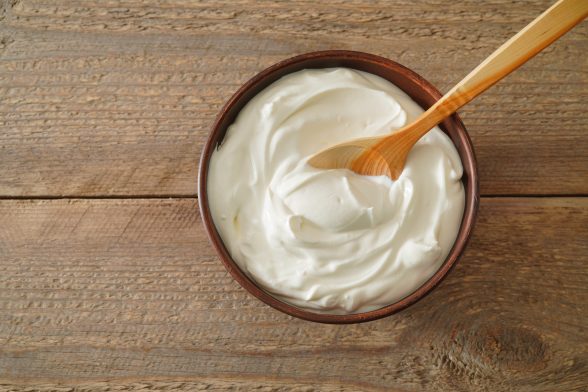- Guidelines for Foraging & Keeping Healthy
- Rapidfire the 25
1- Guidelines for Foraging & Keeping Healthy
 Before we launch into the rapid fire list of 25 plants, let us first explain some basic guidelines for health, safety, and sustainability. First, make sure you are 100% certain of your identification. As we mentioned, there are look-alikes for some plants, and some plants are toxic. Second, never forage in areas you feel may have been sprayed with pesticides. Third, never harvest so much of the plant it cannot recover, or other animals can’t take advantage of the plant. If you come across a patch of berries, for instance, don’t harvest them all. Of course, if you are starving to death, you may need to take more, but you don’t want the plant and habitat to suffer so much it can’t recover. What if you needed to come back in another few weeks to gather more. We intentionally left milkweed off this list because the plant is not as easy to find as it was and the Monarch Butterfly relies upon it. Fourth, make sure you wash food you gather from the outdoors with water and, if possible, a vinegar water bath to remove any bacteria. Placing them post wash into direct sunlight can also help kill viruses and some bacteria, and, of course, cooking them is your best bet. Finally, while we tried to focus on plants that can be eaten in their entirety, from root to aerial parts, note that some plants have leaves that are edible but not the fruit, some have edible fruit but not the leaves, and some have root only that can be eaten. Know everything about the plant before you eat it.
Foragers take the art of foraging seriously, so if you have other advice for newbie foragers, please leave it in the comments below.
Before we launch into the rapid fire list of 25 plants, let us first explain some basic guidelines for health, safety, and sustainability. First, make sure you are 100% certain of your identification. As we mentioned, there are look-alikes for some plants, and some plants are toxic. Second, never forage in areas you feel may have been sprayed with pesticides. Third, never harvest so much of the plant it cannot recover, or other animals can’t take advantage of the plant. If you come across a patch of berries, for instance, don’t harvest them all. Of course, if you are starving to death, you may need to take more, but you don’t want the plant and habitat to suffer so much it can’t recover. What if you needed to come back in another few weeks to gather more. We intentionally left milkweed off this list because the plant is not as easy to find as it was and the Monarch Butterfly relies upon it. Fourth, make sure you wash food you gather from the outdoors with water and, if possible, a vinegar water bath to remove any bacteria. Placing them post wash into direct sunlight can also help kill viruses and some bacteria, and, of course, cooking them is your best bet. Finally, while we tried to focus on plants that can be eaten in their entirety, from root to aerial parts, note that some plants have leaves that are edible but not the fruit, some have edible fruit but not the leaves, and some have root only that can be eaten. Know everything about the plant before you eat it.
Foragers take the art of foraging seriously, so if you have other advice for newbie foragers, please leave it in the comments below.
2- Rapidfire 25
So without further ado, here are the 25 plants for foraging. They are in no particular ranking because what you choose to forage is going to depend heavily upon your environment and what you need to supplement your stored foods. So we begin.- White and Red Clover – Some people know about using red clover to make syrups, but you can also consume the white variety of this common and easily identifiable plant. The entire above ground part of the plant is edible. The dried leaves and flowers have a slight hint of vanilla to them. Once you learn to recognize clover, with its shamrock like leaves, you will see it everywhere. Identify this one from the flowers until you know what you are looking for. It does look a little like Wood Sorrel, which is also edible, but should only be consumed in smaller amounts because of its medicinal properties.
- Daisies – The greens and petals can be eaten and have medicinal purposes, as well. They are somewhat bitter. Daisies have anti-inflammatory and mild astringent properties and have been used internally, in tea form, as an herbal remedy for the common cold, bronchitis and other inflammation of the upper respiratory tract. In folk medicine, it was often recommended to eat the fresh leaves to stimulate nutrition uptake, due to the bitter substances found in the herb. The fresh leaves, flowers, buds, and petals have a pleasant taste and can be used in salads or added to soups. Furthermore, the flower heads can be used in vinegar and as a substitute for capers.
- Dandelions – Probably this one is the most identifiable of any plant on this list. There are some medicinal effects of this plant. It is said to help the liver remove toxins, and it has a diuretic quality. The entire plant is edible. Younger leaves are less bitter than older leaves. The roots can be roasted and ground as a coffee like substitute. The flowers can be eaten raw, tossed into a salad, or sauteed.
- Purslane – You likely have walked right by this plant in hundreds of lawns. The first time I saw it was at a farmers market the same week I had pulled a bunch out from my lawn while weeding. I remember thinking I could have eaten those. In fact, it is widely eaten throughout Europe, Asia, the Middle East, and Africa. It is an annual succulent with a slightly sour and salty taste, making it an interesting addition to the plate and palate. The entire plant, including the leaves, stems, flowers, and seeds are edible and have been used for thousands of years in different variations.
- Roses – Everyone can identify roses, so it’s a good one for our list. The petals can be eaten, however, the rose hips, the fruit of the rose that appears after the flowers drop are a better source of Vitamin C than an orange. Unfortunately, most roses get harvested and clipped back before getting to this stage, but in the wild or after a long period of non-maintenance, rose hips would be in abundance. One rose hip has the equivalent vitamin C of eight oranges. It has the equivalent vitamin A of 21 oranges. The rose hips can be dried and powdered.
- Wild Grapes- Grapes are a vine that can grow throughout the United States. Some vines in the wild can grow up to 50 feet in length. Right off the vine they are more tart than store-bought grapes. The leaves can be blanched and eaten as well. Remember foraging rules and be sure to leave plenty behind for the animals who have been eating off that vine for many years before you showed up.
- Cattail – Yes, cattail can be eaten. You can eat the shoots and stalks raw, but they are better fried. They have a mild asparagus flavor. The seed heads can be harvested for pollen which can be added to flour. The roots can be mashed in water and dried to produce a flour. It’s versatile and grows in many lakes and along most rivers.
- Kudzu – If you live in the south United States you know this invasive plant. The flowers, leaves, and roots are all edible. The roots, like the cattails mentioned previously, can be mashed and dried to make a starch called Japanese arrowroot. Note that the seeds and pods are not edible parts of the Kudzu plant.
- Aloe Vera – The succulent aloe vera is 99% water, doesn’t have much taste, which are two great reasons to seek it out in the wild arid regions. When applied to the skin, it blocks 20% of harmful UV rays, so it hydrates and protects from the sun. The very viscous gel can also be used to shave or soothe irritated skin.
- Prickly Pear Cactus – Also known as Nopales, Spanish for “paddles”, this large cactus is very distinguishable from other cactuses. The needles can be burned off and scraped with a knife, and the soft center eaten. This is also what they make cactus candy out of. The reddish fruit can easily be gathered and eaten later. It has a sweet but subtle flavor.
- Milk Thistle – With large purple pincushion flowers and soft prickly leaves, the Milk Thistle is hard not to notice. You’ll need thick gloves and a knife or scissors to harvest the leaves. Ounce for ounce, thistles come out higher in fiber, protein, phosphorus, magnesium, calcium, copper, zinc, and other nutrients than most typical vegetables. Once you strip the spines off you can eat them raw. A relative to the artichoke, the smaller unopened flower head can be eaten the same way.
- Stinging Nettle – Anything with stinging in the name can’t be good, right? Actually, the stinging nettle gets its name because the leaves have tiny barbs that can irritate the skin. It makes the list here because it is easily recognizable, it has a decent nutritional profile, and for the anti-inflammatory quality of the plant. Blanch the leaves in boiling water.
- Sunflower – The two best things about sunflowers are, first, that the entire plant is edible from root, to stalk, to leaves, to the all too familiar seed. The second best thing is that sunflowers grow with incredible ease. They just need soil, sun, and regular watering and they grow like crazy.
- Acorns – Acorns have been eaten by indigenous Americans as early as recorded history. They are very tannic, so the green acorns can be boiled and drained. Indigenous people would grind dried acorn into flour and soak them in a running stream for a few days to release the tannins. The result is a very nutritious flour. In southern California, you can easily find metetas, holes formed from smashing and grinding the acorns, in boulders beneath large California native oak trees, especially where there is also running water.
- Fiddlehead fern- Fiddleheads or fiddlehead greens are the furled fronds of a young fern, harvested for use as a vegetable. It is abundant in the Pacific Northwest. Sautee them with a little butter and wild garlic. These coiled tips of ferns are the yet to spring leaves. They have a slight nutty flavor.
- Coyote Melon – From California through Texas, the Coyote Melon is edible and grows in abundance in some areas. It resembles a fist-sized watermelon, with a harder rind and more spear tip like leaves. The first time you find one, you’ll turn to the person next to you and ask if they used deodorant. It stinks like body odor. The indigenous people called it the coyote melon because they reasoned that only a coyote would dare eat it. Like I said, it is edible, and if you need to eat to survive, don’t walk by it.
- Lotus Flower – The Asian lotus flower is now somewhat common to ponds across America. The root is edible and loaded with starch. It is similar to a crunchy potato, so it fries up very well.
- Amaranth – Amaranth is very recognizable by its very long, conical, purple flowers. The seeds are about the size of sesame seeds and can be eaten dried or raw. They are packed with calcium and protein. The leaves can be stir fried. Considered a weed, it grows quite well in the wild in many climates.
- Wild Leeks or Ramps are a Spring ephemeral, which means the leaves appear before the leaves on the trees appear. That makes them easier to spot. You can get the same flavor from just the leaf, so try to just clip one leaf from a two leaf plant and remember where the Ramp patch is for the future.
- Wild onions or wild garlic. The real advantage to this allum family is that they are easily identifiable both by sight and by taste. They are very bold in flavor. You can find them growing throughout the country.
- Morels – As with all mushrooms, consult someone more of an expert than you before consumption. There are a lot of toxic varieties and lookalikes, so make sure you know what you are eating. There are also a great many edible varieties. I only include the morel here, because there aren’t many mushrooms with such a distinctive honeycomb head. This makes it, in my opinion, the most recognizable.
- Cone Flower – More commonly known today as Echinacea, modern herbalists claim it boosts immunity. Native Americans have used it for hundreds, maybe thousands of years. The leaves and flower petals are edible. You can also dry the whole plant and break it up for tea.
- Wild blackberries and raspberries – If you live in one of the cooler climate zones where wild blackberries and raspberries grow, you’ve probably grabbed these right off the vine. I include them in the list here because they are so recognizable. Some people just have to go out looking more carefully to find them. The blackberry leaf can be made into a tea or used as a poultice for wounds.
- Pine trees – The nuts and needles of pine trees are edible. Refreshing, nutritious, and somewhat minty in flavor. Pine nuts have more calories than peanuts. If you have ever put a tent up under or near a pine tree at the right part of the year, and you were probably bombarded in a rain shower of bits of pine cone as squirrels dug out these little nuts. The needles can be steeped in hot water to make a refreshing tea.
- Mulberry Trees – Resembling a blackberry in shape, the mulberry can be white, lavender, or purplish black in color. A full grown, old, mulberry tree is a thing of beauty with enough berries to feed every bird and every human for miles around. You’re lucky if you find one of these. It’s a favorite of silk worms, and the berries will easily become one of your favorites.







